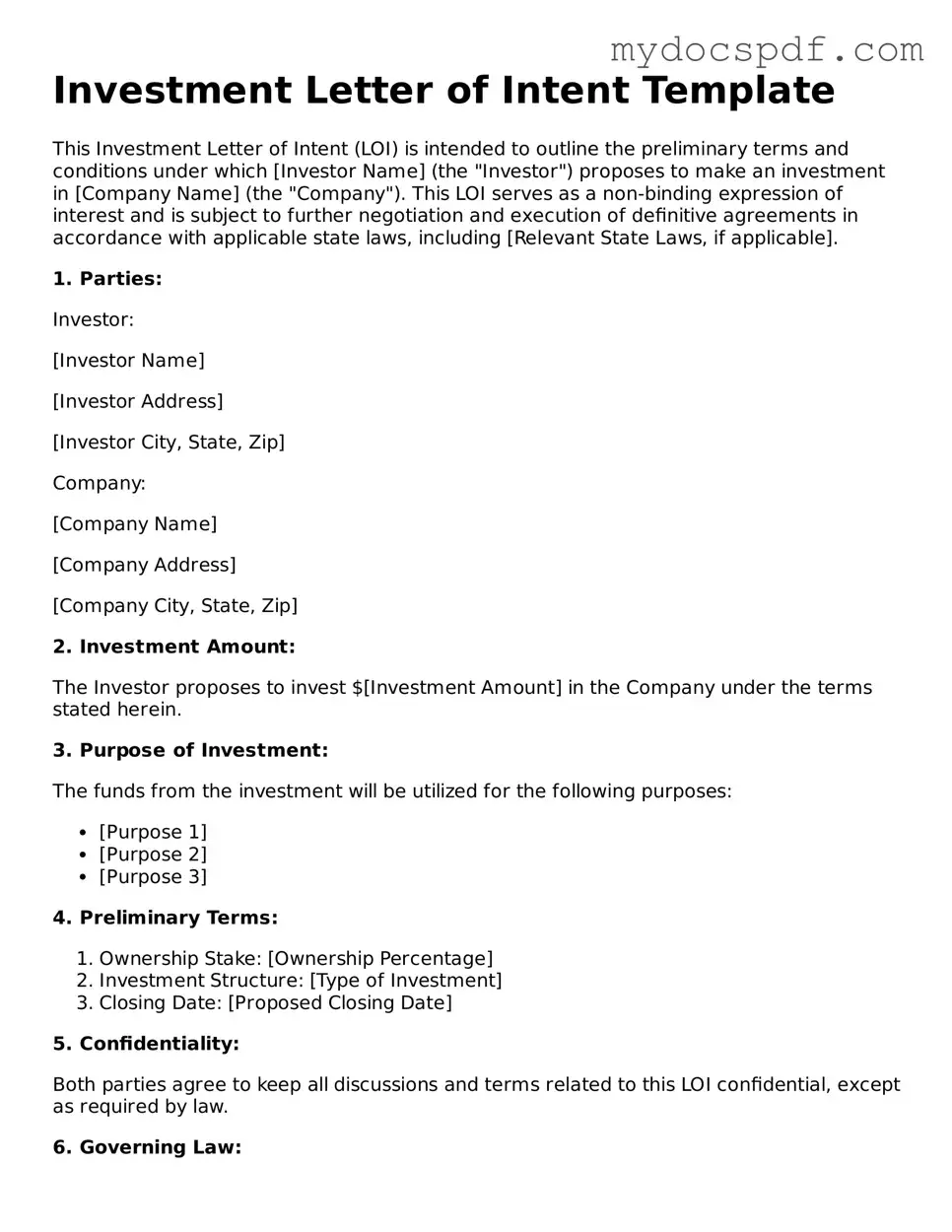Investment Letter of Intent Template
This Investment Letter of Intent (LOI) is intended to outline the preliminary terms and conditions under which [Investor Name] (the "Investor") proposes to make an investment in [Company Name] (the "Company"). This LOI serves as a non-binding expression of interest and is subject to further negotiation and execution of definitive agreements in accordance with applicable state laws, including [Relevant State Laws, if applicable].
1. Parties:
Investor:
[Investor Name]
[Investor Address]
[Investor City, State, Zip]
Company:
[Company Name]
[Company Address]
[Company City, State, Zip]
2. Investment Amount:
The Investor proposes to invest $[Investment Amount] in the Company under the terms stated herein.
3. Purpose of Investment:
The funds from the investment will be utilized for the following purposes:
- [Purpose 1]
- [Purpose 2]
- [Purpose 3]
4. Preliminary Terms:
- Ownership Stake: [Ownership Percentage]
- Investment Structure: [Type of Investment]
- Closing Date: [Proposed Closing Date]
5. Confidentiality:
Both parties agree to keep all discussions and terms related to this LOI confidential, except as required by law.
6. Governing Law:
This LOI shall be governed by the laws of the State of [State].
7. Next Steps:
If the terms outlined in this LOI are acceptable, please sign below and return a copy to the Investor by [Response Date].
8. Signatures:
______________________________
[Investor Name] - Investor
Date: _______________
______________________________
[Company Name] - Company Representative
Date: _______________
